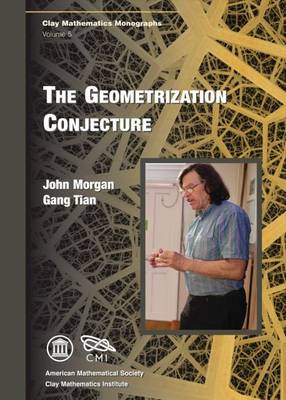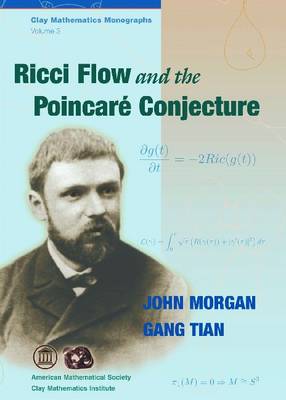Clay Mathematics Monographs
2 total works
For over 100 years the Poincare Conjecture, which proposes a topological characterization of the 3-sphere, has been the central question in topology. Since its formulation, it has been repeatedly attacked, without success, using various topological methods. Its importance and difficulty were highlighted when it was chosen as one of the Clay Mathematics Institute's seven Millennium Prize Problems. In 2002 and 2003 Grigory Perelman posted three preprints showing how to use geometric arguments, in particular the Ricci flow as introduced and studied by Hamilton, to establish the Poincare Conjecture in the affirmative.
This book provides full details of a complete proof of the Poincare Conjecture following Perelman's three preprints. After a lengthy introduction that outlines the entire argument, the book is divided into four parts. The first part reviews necessary results from Riemannian geometry and Ricci flow, including much of Hamilton's work. The second part starts with Perelman's length function, which is used to establish crucial non-collapsing theorems. Then it discusses the classification of non-collapsed, ancient solutions to the Ricci flow equation.The third part concerns the existence of Ricci flow with surgery for all positive time and an analysis of the topological and geometric changes introduced by surgery. The last part follows Perelman's third preprint to prove that when the initial Riemannian 3-manifold has finite fundamental group, Ricci flow with surgery becomes extinct after finite time.
The proofs of the Poincare Conjecture and the closely related 3-dimensional spherical space-form conjecture are then immediate. The existence of Ricci flow with surgery has application to 3-manifolds far beyond the Poincare Conjecture. It forms the heart of the proof via Ricci flow of Thurston's Geometrization Conjecture. Thurston's Geometrization Conjecture, which classifies all compact 3-manifolds, will be the subject of a follow-up article. The organization of the material in this book differs from that given by Perelman. From the beginning the authors present all analytic and geometric arguments in the context of Ricci flow with surgery. In addition, the fourth part is a much-expanded version of Perelman's third preprint; it gives the first complete and detailed proof of the finite-time extinction theorem.
With the large amount of background material that is presented and the detailed versions of the central arguments, this book is suitable for all mathematicians from advanced graduate students to specialists in geometry and topology. Clay Mathematics Institute Monograph Series publishes selected expositions of recent developments, both in emerging areas and in older subjects transformed by new insights or unifying ideas. Information for our distributors: Titles in this series are co-published with the Clay Mathematics Institute (Cambridge, MA).

